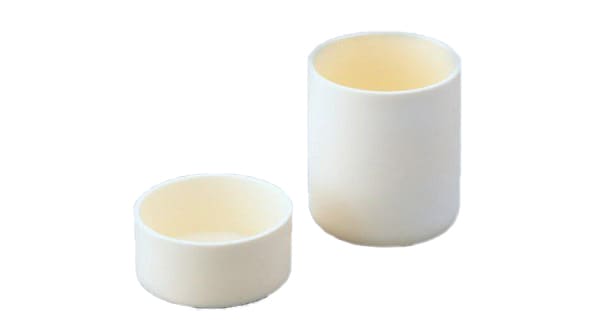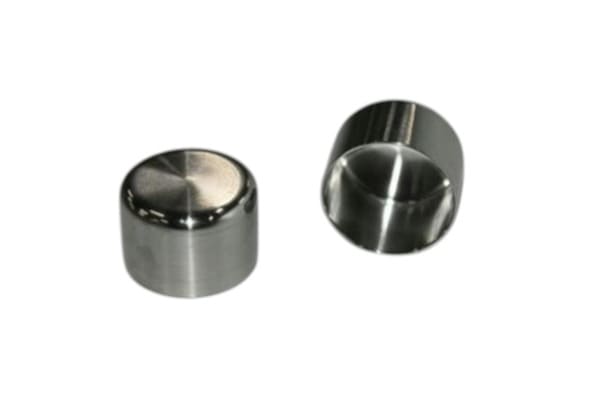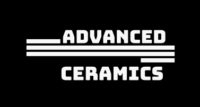How to Choose the Right Crucible Material: A Complete Guide
Choosing the right crucible material is crucial in ensuring the success of high-temperature operations in industries such as metallurgy, chemistry, and materials science. The crucible’s material must meet specific requirements based on the application, temperature, chemical interaction, and other factors. In this guide, we will break down the essential factors to consider when choosing a crucible material and provide insights into the most commonly used types.
At Advanced Ceramics Hub, we specialize in high-quality ceramic crucibles with various materials and specifications, ensuring optimal performance for industrial and scientific applications.
What is a Crucible?
A crucible is a heat-resistant container used to hold and process materials at high temperatures, often exceeding 1000°C. Typically made from materials like ceramics, metals, or graphite, crucibles are designed to withstand thermal and chemical stress without degrading or reacting with their contents. Their primary function is to provide a stable environment for processes such as melting metals, synthesizing chemicals, or conducting thermal analyses. The choice of crucible material directly affects the quality of the process, as it must resist melting, cracking, or contaminating the contents.
Crucibles are employed in a wide range of applications. In metallurgy, they are used to melt metals like gold, silver, or aluminum for casting or alloying. In chemical laboratories, crucibles facilitate high-temperature reactions, such as calcination or ash analysis, where precision and purity are paramount. Industrial processes, such as glass production or semiconductor manufacturing, rely on crucibles for large-scale material processing. Each application demands specific material properties, making it essential to understand the role of the crucible in your specific context.
Looking for top-quality ceramic crucible products? Explore Advanced Ceramics Hub’s selection.
Types of Crucible Materials
Crucibles are made from various materials, each chosen for its ability to withstand high temperatures, resist chemical reactions, and maintain structural integrity. Here are the most common types of crucible materials and their applications:
1. Ceramic Crucibles
Ceramic crucibles, such as those made from alumina (Al₂O₃), zirconia (ZrO₂), or silicon carbide (SiC), are widely used due to their high thermal resistance and chemical inertness. Alumina crucibles, for example, can withstand temperatures up to 1700°C and are ideal for high-purity applications like laboratory experiments or melting non-reactive metals. Zirconia offers even higher temperature resistance (up to 2200°C) and is suitable for specialized applications, though it is more expensive.

Ceramic Crucibles: Types & Properties
| Material | Composition | Max Temp (°C/°F) | Key Properties | Common Applications |
| Porcelain | Alumina (Al₂O₃) + Kaolin clay | 1,200°C / 2,192°F | Chemically inert, moderate thermal shock | Ash testing, chemical analysis |
| Alumina (Al₂O₃) | ≥99% Aluminum Oxide | 1,800°C / 3,272°F | High thermal stability, corrosion-resistant | Sintering, glass melting, high-purity melts |
| Zirconia (ZrO₂) | Yttria-stabilized ZrO₂ | 2,400°C / 4,352°F | Extreme heat resistance, low reactivity | Aerospace alloys, advanced ceramics |
| Silicon Carbide (SiC) | SiC + clay/nitride binder | 1,600°C / 2,912°F | High thermal conductivity, durable | Foundries (iron, steel, bronze) |
| Magnesia (MgO) | Magnesium Oxide | 2,200°C / 3,992°F | Resists basic slags, refractory | Nuclear, steel refining |
Advantages:
- High thermal resistance.
- Minimal reactivity with most substances.
- Suitable for high-purity melts.
Limitations:
- Susceptible to thermal shock.
- Higher cost for advanced ceramics like zirconia.
2. Metal Crucibles
Metal crucibles, made from materials like stainless steel, nickel, or platinum, are valued for their durability and specific chemical compatibility. Stainless steel crucibles are robust and cost-effective, suitable for melting base metals like copper or zinc, but they are limited to temperatures below 1400°C. Nickel crucibles are resistant to certain corrosive environments, while platinum crucibles, though expensive, are ideal for high-purity applications involving reactive metals or chemicals due to their exceptional inertness.

Metal Crucibles: Types & Properties
| Material | Composition | Max Temp (°C/°F) | Key Properties | Common Applications |
| Platinum (Pt) | Pure Pt or Pt-Rh (5-10% Rh) | 1,700°C / 3,092°F | Chemically inert, excellent corrosion resistance | Lab analysis (Na₂O₂ fusions), precious metal melting |
| Platinum-Gold (Pt-Au) | Pt alloyed with Au (e.g., 90% Pt-10% Au) | 1,600°C / 2,912°F | Improved hardness vs pure Pt | Specialty chemical processing |
| Nickel (Ni) | Pure Ni or Ni-Cr alloys | 1,450°C / 2,642°F | Good alkali resistance, moderate cost | Alkali fusion, fertilizer testing |
| Iron/Steel | Cast iron or carbon steel | 1,500°C / 2,732°F* | High strength, low cost | Lead, zinc, tin melting (with protective coatings) |
| Molybdenum (Mo) | Pure Mo or Mo alloys | 2,600°C / 4,712°F | Extremely high melting point | Vacuum furnaces, rare earth metal processing |
| Tantalum (Ta) | Pure Ta | 3,000°C / 5,432°F | Superior corrosion resistance | Semiconductor industry, corrosive melts |
Advantages:
- High mechanical strength.
- Suitable for specific reactive metals.
- Reusable with proper care.
Limitations:
- Limited temperature range compared to ceramics.
- High cost for materials like platinum.
3. Graphite Crucibles
Graphite crucibles are popular in foundry applications due to their excellent thermal conductivity and affordability. They can handle temperatures up to 3000°C in inert atmospheres and are commonly used for melting non-ferrous metals like gold, silver, or aluminum. However, graphite is prone to oxidation at high temperatures in the presence of oxygen, limiting its use in certain environments.

Graphite Crucibles: Types & Properties
| Type | Composition | Max Temp (°C/°F) | Density (g/cm³) | Thermal Conductivity | Key Properties | Applications |
| Clay-Graphite | 30-50% graphite + clay binder | 1,400°C / 2,552°F | 1.8-2.1 | Moderate | Good thermal shock resistance | Non-ferrous metal melting (Al, Cu) |
| Silicon Carbide-Bonded Graphite | SiC + graphite (20-30%) | 1,600°C / 2,912°F | 2.2-2.5 | High | Excellent thermal shock and slag resistance | Foundry applications (iron, steel) |
| Isostatic Graphite | 100% synthetic graphite | 3,000°C / 5,432°F* | 1.7-1.9 | Very high | Ultra-high purity, isotropic | Semiconductor, crystal growth |
| Coated Graphite | Graphite + ceramic coating (Al₂O₃, SiC) | 2,000°C / 3,632°F | 1.9-2.3 | High | Prevents metal contamination | Titanium, zirconium melting |
| Carbon-Bonded Graphite | Graphite + carbon resin | 1,800°C / 3,272°F | 1.6-1.8 | Moderate | Lightweight, good corrosion resistance | Chemical processing, lab use |
Advantages:
- Excellent heat transfer.
- Cost-effective for large-scale applications.
- High temperature tolerance in inert conditions.
Limitations:
- Susceptible to oxidation.
- Not suitable for highly reactive substances.
4. Other Materials
Quartz (SiO₂) and zirconium diboride (ZrB₂) crucibles serve specialized high-temperature applications. Quartz crucibles offer optical transparency and chemical inertness, making them ideal for semiconductor crystal growth (up to 1,200°C), though they are brittle under thermal shock. In contrast, ZrB₂ crucibles withstand extreme temperatures (3,000°C) in inert/vacuum environments, combining high thermal/electrical conductivity with exceptional resistance to molten metals and slags, but remain costly and difficult to manufacture for niche uses like aerospace and nuclear applications.
Other Crucible Materials: Types & Properties
| Material | Composition | Max Temp (°C/°F) | Key Properties | Applications |
| Quartz (Fused Silica) | SiO₂ (99.9%+) | 1,100°C / 2,012°F | High purity, transparent to UV/IR | Semiconductor crystal growth, glass studies |
| Zirconium Diboride (ZrB₂) | ZrB₂ + SiC additive | 3,000°C / 5,432°F | Ultra-refractory, conductive | Ultra-high-temp research, aerospace |
Each type is selected based on the specific requirements of the process, such as temperature range, chemical resistance, and material properties.
Explore our optimized ceramic crucible products.
Key Criteria for Choosing a Crucible Material
1. Temperature Resistance
The maximum operating temperature of a crucible is a primary consideration. Materials like graphite and zirconia can handle extreme temperatures (up to 3000°C and 2200°C, respectively, in inert conditions), while quartz is limited to around 1200°C. Exceeding a material’s temperature limit can cause melting, deformation, or catastrophic failure, ruining the process and potentially damaging equipment. Always check the melting point of the substance you’re working with and ensure the crucible can handle 10-20% above that temperature for safety.
High-Temperature Champions:
- Zirconium Diboride (ZrB₂): Up to 3,000°C (inert/vacuum)
- Tungsten (W): 3,400°C (requires no-oxygen environments)
- Graphite (Isostatic): 3,000°C (inert gas)
Moderate-Temperature Options:
- Quartz (SiO₂): 1,200°C (short-term)
- Alumina (Al₂O₃): 1,800°C
2. Chemical Compatibility
Chemical compatibility ensures the crucible does not react with the molten substance or ambient gases. For example, platinum is highly inert and suitable for reactive metals like titanium, while graphite may react with certain alloys in oxygen-rich environments. Compatibility charts, available from material suppliers, list reactions between crucible materials and common substances. Failure to account for compatibility can lead to contamination, altering the properties of the melt or damaging the crucible.
Acid/Base Resistance:
- Platinum: Resists all acids except aqua regia; ideal for lab-grade purity.
- Quartz: Excellent for acids (except HF) but dissolves in alkalis.
- Nickel: Withstands molten NaOH/KOH but corrodes in acids.
Metal Reactivity:
- Graphite: Contaminates reactive metals (e.g., Ti) → Requires coatings.
- ZrB₂: Inert to molten Ti, U, and rare earths.
3. Thermal Shock Resistance
Thermal shock resistance determines a crucible’s ability to withstand rapid temperature changes without cracking. Ceramic materials like alumina are prone to thermal shock, requiring gradual heating and cooling, while silicon carbide and boron nitride excel in this area. Processes involving frequent temperature cycling, such as in foundries, demand materials with high thermal shock resistance to ensure longevity.
Best Performers:
- Silicon Carbide (SiC): Handles rapid cooling/heating cycles.
- Boron Nitride (BN): Low thermal expansion prevents cracking.
Poor Performers:
- Quartz: Brittle; cracks under sudden temp changes.
- Porcelain: Prone to spalling.
4. Cost & Availability
Cost is a practical consideration, especially for large-scale or frequent use. Graphite is an affordable option for routine applications, while platinum and zirconia are significantly more expensive, reserved for specialized tasks. Availability also matters—exotic materials like boron nitride may have longer lead times or limited suppliers, impacting project timelines.
Economical Choices:
- Clay-Graphite: $20–100 (widely available for non-ferrous metals).
- Steel: <$50 (limited to low-melting-point metals).
Premium Options:
- Platinum: $5,000+ (lab/small-scale only).
- ZrB₂: $1,000+ (custom orders, 6–8 week lead time).
5. Durability and Lifespan
The durability of a crucible affects its cost-effectiveness over time. Metal crucibles like stainless steel are robust but may corrode in reactive environments. Ceramics, while brittle, can last for multiple cycles if handled carefully. Consider whether single-use or reusable crucibles are more suitable for your application, balancing initial cost against long-term performance.
Discover our high-quality ceramic crucible products.
Application-Specific Considerations
Different applications demand unique crucible properties. Below is a breakdown of optimal materials for key industrial and laboratory uses:
1. Semiconductor & Crystal Growth
✅Key Needs: Ultra-high purity, no contamination, thermal stability.
✅Best Materials:
- Quartz (SiO₂): For silicon Czochralski growth (transparent, high-purity).
- Boron Nitride (BN): For GaN or GaAs (non-wetting, minimal doping risk).
✖Avoid: Graphite (carbon contaminates Si) or metals (impurity diffusion).
2. Precious Metal Melting (Gold, Silver, Platinum)
✅Key Needs: Chemical inertness, no metal loss, durability.
✅Best Materials:
- Dense Alumina (Al₂O₃): High-purity, reusable, no reaction.
- Platinum (Pt): For lab-scale ultra-pure melts (but expensive).
✖Avoid: Porous ceramics (metal penetration) or steel (iron contamination).
3. Iron/Steel Foundries
✅Key Needs: Slag resistance, thermal shock tolerance, longevity.
✅Best Materials:
- Silicon Carbide (SiC): Handles molten iron/steel (1,500°C+).
- Zirconia (ZrO₂): For superalloys or reactive steels.
✖Avoid: Clay-graphite (erodes quickly) or quartz (too brittle).
4. Reactive Metals (Titanium, Zirconium, Uranium)
✅Key Needs: No carbon pickup, extreme temperature stability.
✅Best Materials:
- Coated Graphite (SiC/Al₂O₃ coating): Prevents metal-carbide formation.
- Zirconium Diboride (ZrB₂): For ultra-high-temp vacuum melting.
✖Avoid: Uncoated graphite (forms carbides) or quartz (reacts with Ti).
5. Analytical Chemistry (Sample Fusion, Ash Testing)
✅Key Needs: Chemical resistance, minimal trace elements.
✅Best Materials:
- Platinum (Pt): For NaOH/Na₂O₂ fusions (most inert).
- Nickel (Ni): Budget alternative for alkali melts only.
✖Avoid: Porcelain (leaches Al/Si in acidic digestion).
6. Aerospace & Nuclear (Tantalum, Tungsten, Nuclear Fuels)
✅Key Needs: Extreme temps, radiation resistance, no phase changes.
✅Best Materials:
- Tungsten (W): Highest melting point (3,400°C).
- Molybdenum (Mo): More affordable than W for vacuum furnaces.
✖Avoid: Ceramics (brittle under radiation) or graphite (oxidizes).
Request a custom quote for high-quality ceramic products.
Practical Tips for Selection
To choose the right crucible, start by assessing your needs. Identify the maximum temperature, the type of substance (e.g., metal, chemical), and the process environment (e.g., air, vacuum, or inert gas). Create a checklist of requirements to narrow down material options.
✅Consult material compatibility charts from suppliers or industry references to avoid reactions. For example, melting copper in a graphite crucible in an oxygen-rich environment can cause oxidation, so an inert atmosphere or a different material may be necessary.
✅Test small-scale before committing to large-scale processes. A trial run with a small crucible can reveal issues like thermal shock or contamination, saving time and resources. For reusable crucibles, ensure proper cleaning and storage to extend their lifespan.
✅Consider reusability based on your application. Single-use crucibles, like some porcelain models, are suitable for one-off experiments, while durable materials like silicon carbide are better for repeated industrial use.
✅Choose reputable suppliers to ensure quality. Low-quality crucibles may contain impurities or manufacturing defects, leading to premature failure. Verify supplier certifications and read reviews to confirm reliability.
Checklist for Crucible Selection:
- Maximum temperature required.
- Type of substance and its reactivity.
- Environmental conditions (e.g., air, vacuum).
- Budget constraints.
- Expected lifespan and reusability.
Common Mistakes to Avoid
❌Ignoring Chemical Reactions: Failing to account for reactions between the crucible and its contents can lead to contamination or material failure. For example, using a graphite crucible with an oxidizing metal in air can cause the crucible to burn away, ruining the melt.
❌Overlooking Thermal Limits: Exceeding a crucible’s temperature rating can cause it to melt or crack. Always verify the material’s maximum temperature and include a safety margin. For instance, using a porcelain crucible above 1200°C risks structural failure.
❌Neglecting Thermal Shock: Rapid heating or cooling can crack brittle materials like alumina. Preheating the crucible gradually and avoiding sudden exposure to cold surfaces can mitigate this risk.
❌Focusing Solely on Cost: Opting for the cheapest crucible may lead to frequent replacements or process failures. Investing in a higher-quality material, like silicon carbide for industrial use, often saves money in the long run.
At Advanced Ceramics Hub, we supply optimized-grade ceramic products that comply with ASTM and ISO standards, ensuring outstanding quality and reliability.
Choosing the right crucible material is a critical decision that impacts the success of your high-temperature process. By considering factors such as temperature resistance, chemical compatibility, thermal conductivity, and durability, you can ensure that you select the most suitable crucible for your needs. Whether you’re working in a laboratory, a foundry, or a research facility, understanding the properties of different materials will help you achieve better results, reduce costs, and increase the lifespan of your equipment.
For top-quality ceramic products, Advanced Ceramics Hub provides tailored solutions and precision machining techniques for various applications.
Looking for premium ceramic crucible products? Contact us today!
